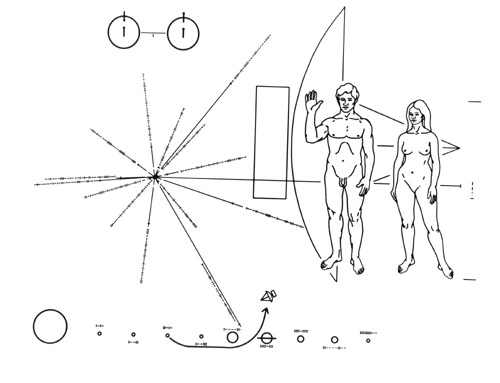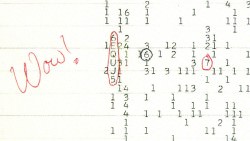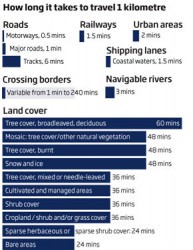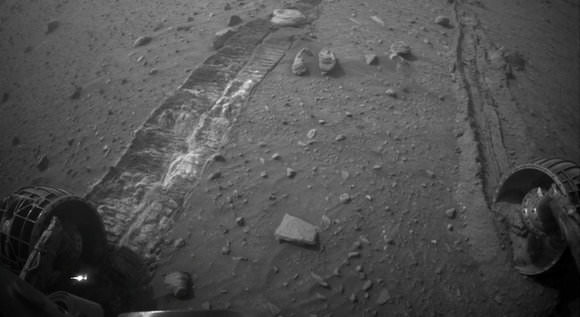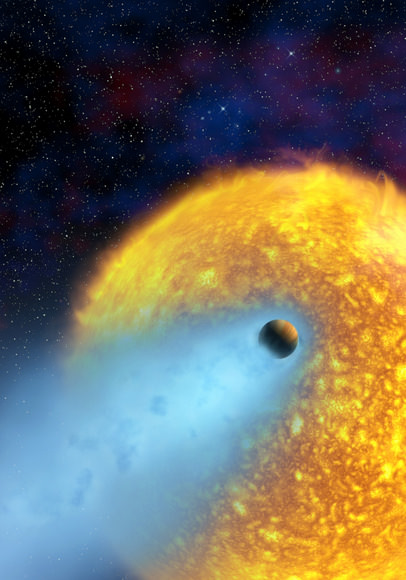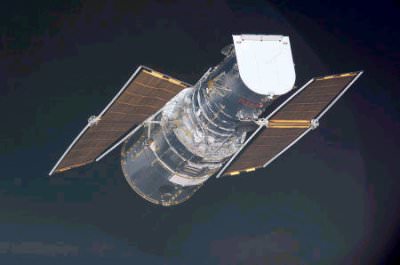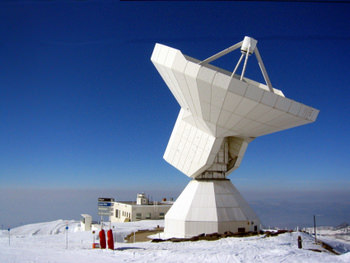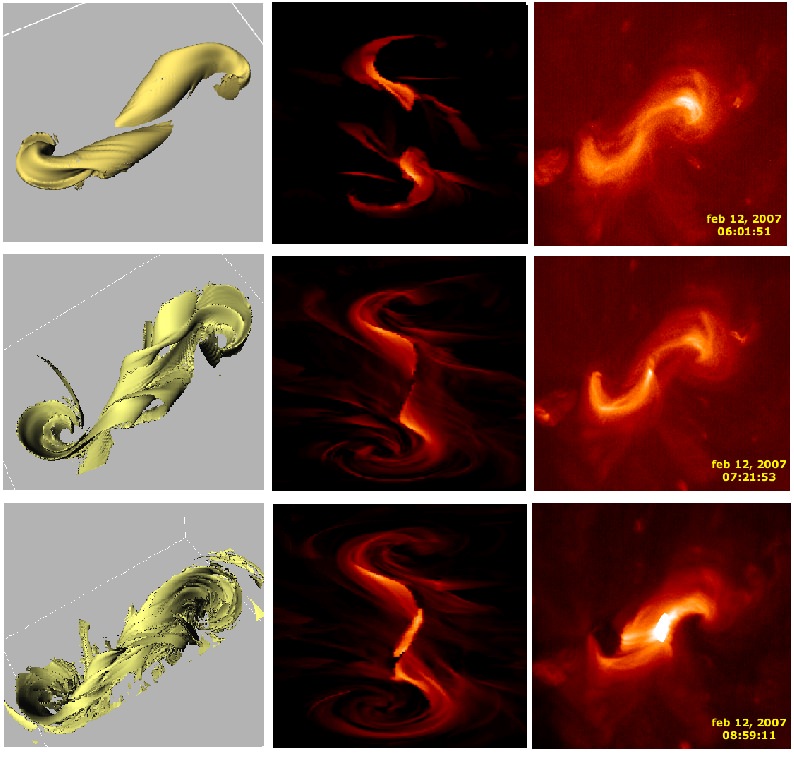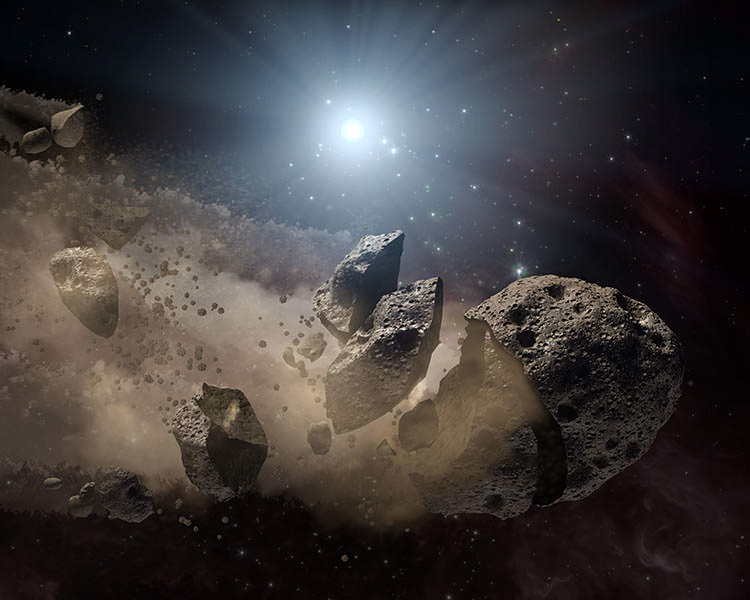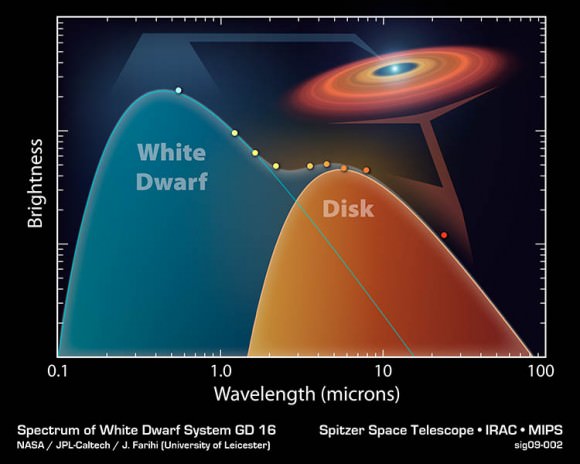Astronomers are announcing a newly discovered exoplanet in the habitable zone of its star, and another one — in the same system — that’s just twice the size of Earth.
The Gliese 581 planetary system now has four known planets, with masses of about 1.9 (planet e, left in the foreground), 16 (planet b, nearest to the star), 5 (planet c, center), and 7 Earth-masses (planet d, with the bluish colour).
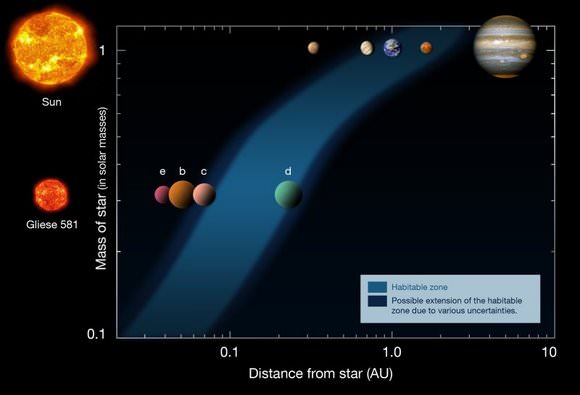
This diagram shows the distances of the planets in the Solar System (upper row) and in the Gliese 581 system (lower row), from their respective stars (left). The habitable zone is indicated as the blue area, showing that Gliese 581 d is located inside the habitable zone around its low-mass red star. Based on a diagram by Franck Selsis, Univ. of Bordeaux.
Michel Mayor, a well-known exoplanet researcher from the Geneva Observatory, announced the find today. The planet, “e,” in the famous system Gliese 581, is only about twice the mass of our Earth. The team also refined the orbit of the planet Gliese 581 d, first discovered in 2007, placing it well within the habitable zone, where liquid water oceans could exist.
Both planets were discovered by the so-called “wobble method,” using the HARPS spectrograph attached to the 3.6-meter (11.8-foot) ESO telescope at La Silla, Chile.
The gentle pull of an exoplanet as it orbits the host star introduces a tiny wobble in the star’s motion that can just be detected on Earth with today’s most sophisticated technology. Low-mass red dwarf stars such as Gliese 581 are potentially fruitful hunting grounds for low-mass exoplanets in the habitable zone. Such cool stars are relatively faint and their habitable zones lie close in, where the gravitational tug of any orbiting planet found there would be stronger, making the telltale wobble more pronounced.
Many more exoplanets have been discovered using the transit method being employed by NASA’s Kepler mission: as planets pass between their host stars and Earth, they cause an observable, periodic dimming.
Planet Gliese 581 e orbits its host star – located only 20.5 light-years away in the constellation Libra (“the Scales”) — in just 3.15 days.
“With only 1.9 Earth-masses, it is the least massive exoplanet ever detected and is, very likely, a rocky planet,” says co-author Xavier Bonfils from Grenoble Observatory. Being so close to its host star, the planet e is not in the habitable zone. But another planet in this system appears to be.
“Gliese 581 d is probably too massive to be made only of rocky material, but we can speculate that it is an icy planet that has migrated closer to the star,” added team member Stephane Udry. The new observations have revealed that this planet is in the habitable zone, where liquid water could exist. “‘d’ could even be covered by a large and deep ocean — it is the first serious ‘water world’ candidate,” he said.
Mayor said it’s “amazing to see how far we have come since we discovered the first exoplanet around a normal star in 1995 — the one around 51 Pegasi. The mass of Gliese 581 e is 80 times less than that of 51 Pegasi b. This is tremendous progress in just 14 years.”
But the astronomers aren’t finished yet. “With similar observing conditions an Earth-like planet located in the middle of the habitable zone of a red dwarf star could be detectable,” says Bonfils. “The hunt continues.”
The findings were presented this week at the European Week of Astronomy & Space Science, which is taking place at the University of Hertfordshire in the UK. The results have also been submitted for publication in the research journal Astronomy & Astrophysics. A preprint is available here.
Source: ESO. (The site also offers numerous videos about the find.)


